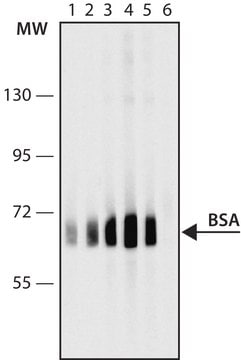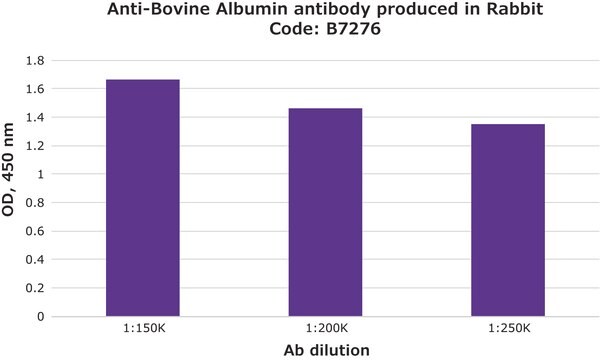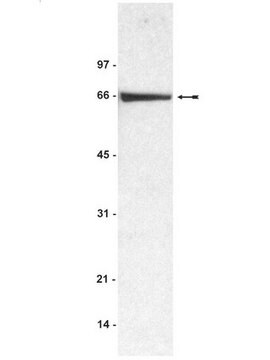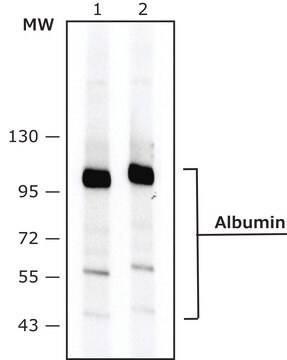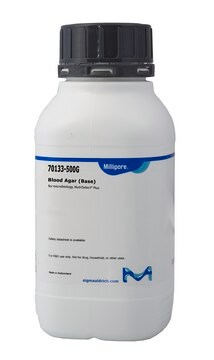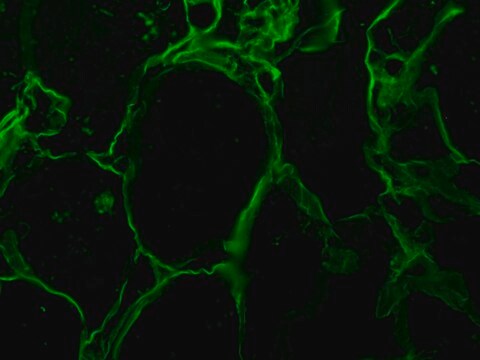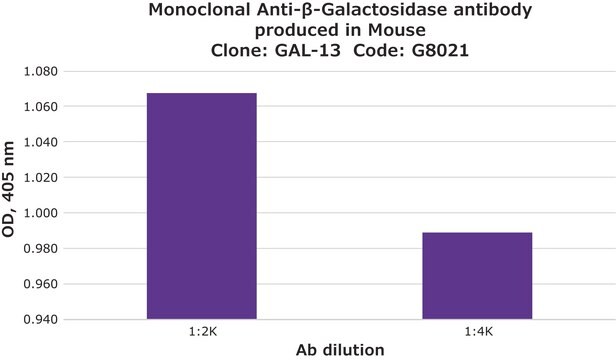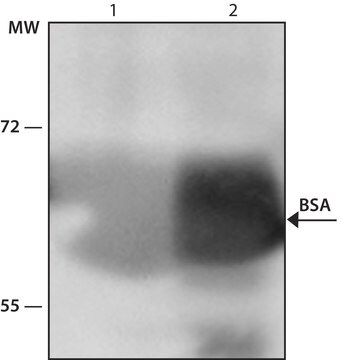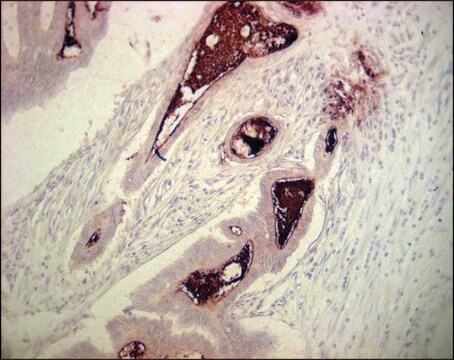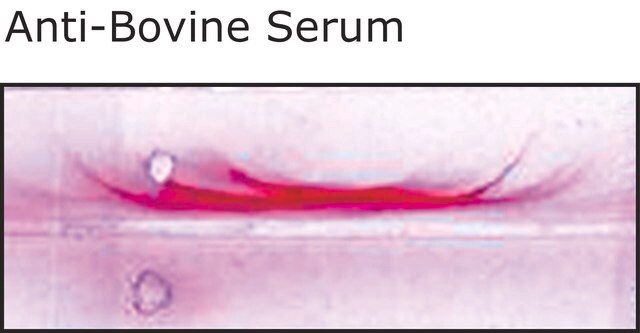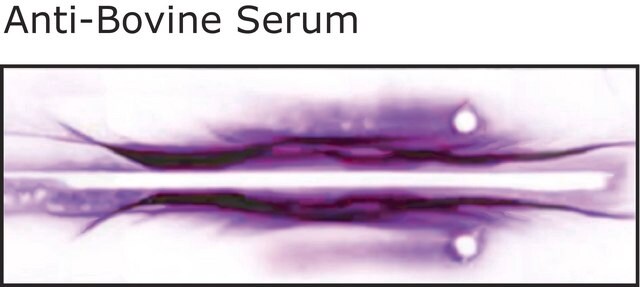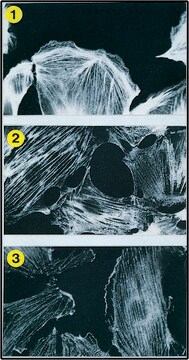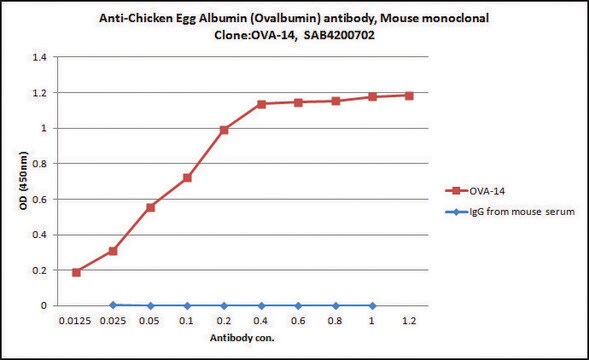B2901
Monoclonal Anti-Bovine Serum Albumin antibody produced in mouse
clone BSA-33, ascites fluid
Synonym(s):
Anti Bsa, Anti-Bsa Antibody, BSA Antibody - Monoclonal Anti-Bovine Serum Albumin antibody produced in mouse, Bsa Antibody, Anti-Albumin, bovine serum, Anti-BSA
About This Item
Recommended Products
biological source
mouse
Quality Level
conjugate
unconjugated
antibody form
ascites fluid
antibody product type
primary antibodies
clone
BSA-33, monoclonal
contains
15 mM sodium azide
species reactivity
bovine (high), turkey (low), canine (low), sheep (high), horse (low), goat (high)
should not react with
human, hamster, rabbit, donkey, guinea pig, mouse, rat, chicken, feline, pigeon, pig
technique(s)
dot blot: suitable
indirect ELISA: 1:1,000
isotype
IgG2a
shipped in
dry ice
storage temp.
−20°C
target post-translational modification
unmodified
Gene Information
bovine ... Alb(280717)
chicken ... Alb(396197)
dog ... Alb(403550)
horse ... Alb(100034206)
human ... ALB(213)
mouse ... Alb(11657)
pig ... Alb(396960)
rabbit ... Alb(100009195)
rat ... Alb(24186)
sheep ... Alb(443393)
General description
Specificity
Monoclonal Anti-Bovine Serum Albumin antibody is specific for SDS-denatured and reduced BSA. While the product is highly cross reactive with goat and sheep serum; it has a lower affinity for dog, turkey and horse serum albumins.
Immunogen
Application
- enzyme linked immunosorbent assays (ELISA)
- competitive ELISA
- immunodot blot
- western blotting
- immunoaffinity purification or adsorption of BSA from biological fluids.
Biochem/physiol Actions
Disclaimer
Not finding the right product?
Try our Product Selector Tool.
Storage Class Code
12 - Non Combustible Liquids
WGK
nwg
Flash Point(F)
Not applicable
Flash Point(C)
Not applicable
Choose from one of the most recent versions:
Already Own This Product?
Find documentation for the products that you have recently purchased in the Document Library.
Customers Also Viewed
Our team of scientists has experience in all areas of research including Life Science, Material Science, Chemical Synthesis, Chromatography, Analytical and many others.
Contact Technical Service